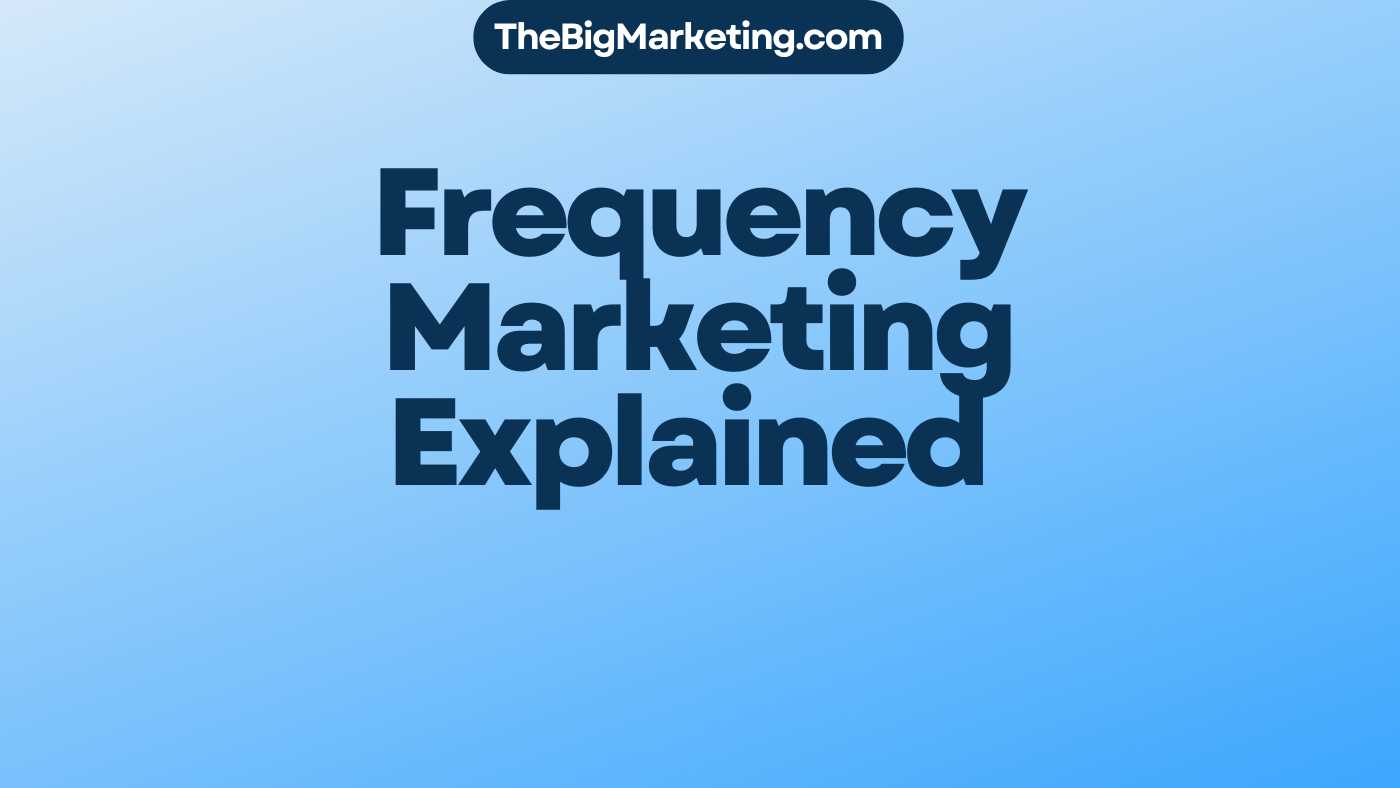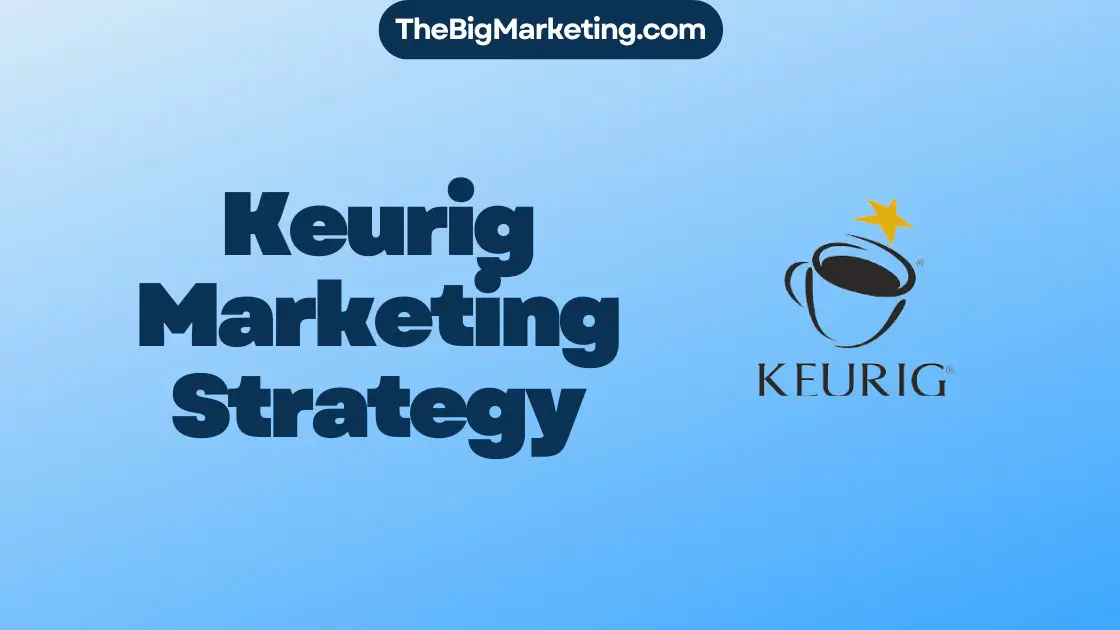Adidas, founded in 1949 by Adolf Dassler in Herzogenaurach, Germany, has emerged as a global leader in sportswear manufacturing and branding. The brand’s journey from its early years to its current position as a powerhouse in the sports and fashion industry showcases a strategic approach to brand development, positioning, and identity.
Throughout its history, Adidas has embraced innovation and performance as core pillars of its branding strategy. The brand made waves in 1954 with the introduction of the first screw-in stud football boot, revolutionizing the game and solidifying its commitment to pushing boundaries.
One of the most recognizable aspects of the Adidas brand is its iconic three-stripe logo, introduced in 1952. The logo, representing a mountain, has become synonymous with Adidas and serves as a symbol of excellence and quality.
To enhance its global reach and credibility, Adidas forged partnerships with legendary athletes like Muhammad Ali and Franz Beckenbauer in the 1960s and 1970s. These collaborations not only expanded the brand’s influence but also solidified its connection to the world of sports.
In the 1980s, Adidas made a strategic move into streetwear by collaborating with the hip-hop group Run-DMC. This partnership marked a significant shift in the brand’s marketing approach, tapping into the street culture and gaining popularity among a wider audience.
In 2005, Adidas made a bold move by acquiring Reebok, further expanding its influence and diversifying its product offering. Under the leadership of CEO Herbert Hainer, the brand underwent revitalization efforts that resulted in strong financial performance and market growth.
Adidas is also committed to sustainability, aiming to use only recycled polyester in its products by 2024. This initiative aligns with the brand’s focus on social responsibility and contributes to its overall branding goals.
When it comes to marketing, Adidas targets athletes, young people aged 13-30 interested in sports culture, and fitness enthusiasts. The brand utilizes digital marketing, e-commerce platforms, and social media to enhance visibility and engage with its target audience.
The “Creators Club” loyalty initiative offers special benefits to Adidas’ loyal customers, fostering brand loyalty and recognition. Additionally, Adidas strategically focuses on key cities like Paris, Tokyo, and New York to influence fashion trends and maintain its relevance in the industry.
As part of its branding strategy, Adidas collaborates with influential celebrities like Kanye West and Pharrell Williams, which boosts brand credibility and drives sales. The brand has also secured noteworthy athlete endorsements from icons like Lionel Messi and Naomi Osaka, further enhancing its global exposure.
Adidas’s comprehensive branding strategy spans across traditional and digital media channels, effectively integrating brand and business strategies. By leveraging its brand identity and recognition, Adidas continues to solidify its position as one of the most valuable assets in the industry.
Key Takeaways:
- Adidas embraces innovation and performance as core pillars of its branding strategy.
- The iconic three-stripe logo represents excellence and quality.
- Partnerships with legendary athletes enhance global reach and credibility.
- Collaborations with hip-hop group Run-DMC mark Adidas’ entry into streetwear.
- The acquisition of Reebok in 2005 expands Adidas’ influence.
- Adidas is committed to sustainability, aiming to use only recycled polyester by 2024.
- Targeted marketing and collaborations with celebrities contribute to brand credibility and sales.
- The “Creators Club” loyalty initiative fosters brand loyalty and recognition.
- Adidas employs a comprehensive branding strategy across traditional and digital media channels.
In conclusion, Adidas’ branding strategy is a testament to its commitment to innovation, performance, and sustainability. The brand’s ability to adapt and engage with its target audience has solidified its position as a global leader in the sports and fashion industry.
The Early Years: Foundation of Innovation and Performance
In 1949, Adolf “Adi” Dassler founded Adidas, a renowned sports brand that has left an indelible mark on the industry. However, the journey of Adidas began much earlier, rooted in the vision and determination of Adi and his brother Rudolf. In the 1920s, they established Gebrüder Dassler Schuhfabrik, a shoe company that laid the foundation for what would become a global phenomenon.
Adi Dassler’s unwavering commitment to product quality and innovation propelled the success of Adidas. One of the most iconic innovations in the history of sports footwear was the introduction of the screw-in stud football boot in the 1954 FIFA World Cup. This groundbreaking creation revolutionized the game, providing players with enhanced traction and stability on the field.
Adidas’ dedication to pushing the boundaries of performance did not go unnoticed. The “Miracle of Bern” victory by the West German national team in the 1954 World Cup showcased the effectiveness of the Adidas screw-in studs and solidified their reputation as a leader in sports footwear.
In addition to groundbreaking innovations, Adidas consistently prioritized product quality. With each new release, Adidas set the standard for excellence, gaining the trust and loyalty of athletes and consumers worldwide.
| Year | Landmark |
|---|---|
| 1924 | Adolf (Adi) Dassler founded Gebrüder Dassler Schuhfabrik |
| 1928 | First spiked running shoes by Dassler Brothers help Lina Radke win a gold medal at the Amsterdam Olympics |
| 1954 | The introduction of the screw-in stud football boot helps the West German national team win a surprise victory in the World Cup |
The Three Stripes Logo: Symbol of Excellence
Since its introduction in 1952, the Adidas logo, featuring the iconic three stripes, has become a powerful symbol of excellence and success. The logo’s design represents a mountain, symbolizing the challenges that athletes face and the goals they strive to achieve. The three stripes have become an unmistakable trademark of the Adidas brand, demonstrating their commitment to performance, design, and heritage.
The Adidas logo has undergone several modifications throughout its history, but the inclusion of the three stripes remains constant. In 1967, the three stripes were added to the Adidas logo, and they quickly became a defining feature of the brand’s visual identity. The three stripes represent the pillars of performance, design, and heritage that Adidas has built its reputation upon.
Not only a visual representation of excellence, but the three stripes also hold deep meaning within the Adidas brand. They signify the Adidas legacy of innovation, visionary leadership, and a constant pursuit of greatness. These qualities have propelled Adidas to become a key player in sports sponsorship, partnering with renowned athletes and teams worldwide.
The Adidas logo is not only recognizable and respected within the sportswear industry, but it has also made a lasting impact on the world of fashion. Famous athletes and celebrities have proudly worn Adidas products, showcasing the logo and contributing to its widespread recognition.
To further elevate the Adidas logo’s significance, the brand introduced the Adidas mountain symbol in 1991. The mountain symbol features three peaks, each representing physical, mental, and social challenges. This addition reinforces Adidas’ commitment to overcoming obstacles and pushing boundaries.
Today, Adidas embraces its rich history and legacy through two main logos: the standard logo with the trefoil and three stripes, and the word-mark logo with the Adidas name. Both logos serve as vital branding tools that maintain the iconic image of Adidas in the market.
Throughout the years, Adidas has consistently utilized its logo as a key marketing asset. Collaborations and partnerships with various brands and designers have led to the creation of unique and innovative products that showcase the Adidas logo’s versatility and adaptability.
As Adidas continues to evolve and redefine the boundaries of sports and fashion, its iconic logo remains an enduring symbol of excellence, innovation, and success.
The Rise of Sponsorships: Enhancing Global Reach
In the 1960s and 1970s, Adidas recognized the tremendous potential of athlete endorsements and sponsorships, making it a cornerstone of their marketing strategy. By collaborating with legendary figures like Muhammad Ali and Franz Beckenbauer, Adidas solidified its position as a premier sports brand and expanded its global recognition.
With each high-profile sponsorship, Adidas bolstered its reputation and connected with audiences worldwide. The partnership with Muhammad Ali, the legendary boxer known for his athleticism and charisma, showcased Adidas’ commitment to excellence and resonated with sports enthusiasts around the globe.
Furthermore, Adidas recognized the immense talent and influence of Franz Beckenbauer, one of the greatest footballers of his time. By associating with Beckenbauer, Adidas positioned itself as the brand for top athletes in various sports, further enhancing its global reach and credibility.
These strategic sponsorships not only elevated the Adidas brand but also influenced the perception of sportswear, showcasing the power of collaborations with iconic athletes. The endorsements created a strong association between Adidas and exceptional athletic performance, ingraining the brand in the minds and hearts of consumers worldwide.
Continued Legacy
Today, Adidas continues to build its legacy through athlete endorsements and sponsorships. The brand collaborates with high-profile athletes like Lionel Messi, Serena Williams, and Paul Pogba, fostering a connection between the brand and sporting excellence.
By strategically partnering with these athletes, Adidas boosts its brand visibility and creates aspirational messaging that resonates with consumers. The endorsements serve as a powerful tool to not only promote products but also inspire athletes and fans alike.
With a focus on creating cutting-edge products and utilizing celebrity partnerships, Adidas maintains its position as a global leader in the sportswear industry. The brand’s dedication to innovation, style, and athlete endorsement ensures its continued success in capturing the attention and loyalty of customers worldwide.
As Adidas pioneers new sponsorships and collaborations, the brand’s global recognition soars to new heights, solidifying its place as a powerful force in the industry.
The Shift Towards Fashion: Streetwear Influence
While initially focused on sports performance, Adidas recognized the demand for sportswear as a fashion statement. In the 1980s, Adidas collaborated with iconic hip-hop group Run-DMC, marking its entry into streetwear. This collaboration laid the foundation for Adidas’ enduring presence in both sports and fashion.
- Collaborations with influencers and musicians:
- Cultural relevance and social media:
- Inclusivity and social awareness:
- Consumer preferences and retail strategies:
Adidas understands the power of collaborations to create unique and innovative products that resonate with consumers. Collaborations with brands such as Allbirds, Crayola, and Gucci have showcased Adidas’ ability to merge the worlds of sports and fashion, appealing to a wide range of consumers. These collaborations have not only expanded Adidas’ streetwear offerings but also reinforced its position as a leader in the fashion industry.
Adidas recognizes the influence of social media in shaping streetwear trends. With 84% of streetwear consumers being influenced by social media, Adidas actively engages with the community through digital platforms, connecting with their target audience and staying up to date with the latest trends. By collaborating with musicians and cultural icons, Adidas taps into the streetwear culture’s credibility, with 65% of consumers considering musicians to have the most influence in this space.
Streetwear culture is closely tied to social awareness and brand activism, and Adidas is committed to championing these values. Through collaborations like the inclusive sizing collection with Universal Standard and the post-mastectomy sports bra designed with Stella McCartney, Adidas demonstrates its dedication to catering to diverse consumer needs and empowering individuals. These collaborations not only contribute to the brand’s success in the streetwear market but also solidify its reputation as a socially conscious fashion brand.
Understanding consumer preferences is crucial in the competitive streetwear market. According to surveys, 56% of consumers reported spending between $100 and $300 on a single streetwear item, with some Asian consumers willing to spend $500 or more per product. Additionally, 53% of consumers prefer to buy streetwear products in the brand’s own store. Adidas caters to these preferences by strategically expanding its retail presence while also providing an online shopping experience that aligns with the digital habits of its target audience.
Streetwear Market Statistics
| Market Value | Audience Demographics | Consumer Behavior |
|---|---|---|
| $185 billion (estimated) | – Predominantly young audience – Most consumers under 25 years old |
– 76% expect market growth – 84% influenced by social media – 65% value musician influence – 70% prioritize social awareness and brand activism – Average streetwear item spending: $100-$300 (56% of consumers) – Asian consumers may spend $500 or more per product – Preferred purchase location: 53% in brand’s own store, 42% online |
By capitalizing on the growing popularity of streetwear and embracing collaborations that bridge the gap between sports and fashion, Adidas has successfully positioned itself as a leader in the evolving streetwear market. Its commitment to inclusivity, social awareness, and consistently delivering impactful communication has resonated with consumers who seek both style and substance in their fashion choices.
Challenges and Rebirth: Revitalization Efforts
Throughout its history, Adidas has faced various challenges, but it has always demonstrated resilience and an ability to adapt to changing market conditions. In the late 20th century, the brand encountered increased competition and financial difficulties. However, under the leadership of CEO Herbert Hainer in the early 2000s, Adidas embarked on a journey of revitalization.
Recognizing the need to regain its competitive edge, Adidas invested in marketing, innovation, and strategic acquisitions. One of the notable acquisitions was that of Reebok in 2005, a move that expanded the brand’s reach and diversified its product offerings. The sale of Reebok in 2021 amounted to a significant 2.5 billion euros, further strengthening Adidas financially.
To stay ahead in the market, Adidas strategically partnered with renowned artists and designers, resulting in the introduction of unique and bold models. The Adidas Yeezy, a collaboration with rapper Kanye West, exemplifies the brand’s ability to tap into pop culture and create highly sought-after products. These collaborations not only attract a wider audience but also enhance the brand’s image as a trendsetter in the fashion industry.
Moreover, Adidas has prioritized sustainability initiatives in recent years. The brand recognizes the importance of responsible production and has taken steps to produce shoes and clothing made from recycled materials. Collaborations such as the one with Parley for the Oceans showcase Adidas’ commitment to environmental conservation, utilizing plastic recovered from the oceans to create innovative and eco-friendly products.
By navigating challenges, making strategic acquisitions, and embracing sustainability, Adidas has successfully revitalized its brand and regained its position as a fierce competitor in the market. Its commitment to innovation, style, and social responsibility ensures that Adidas continues to thrive in the ever-evolving world of sportswear and fashion.
Adidas Financial Performance and Revitalization Efforts:
| Year | Financial Performance |
|---|---|
| 2015 | Adidas worth nearly 10 billion euros, rivaling Nike |
| 2021 | Sale of Reebok amounted to 2.5 billion euros |
Sustainability and Social Responsibility: A Commitment to the Future
In recent years, Adidas has made significant strides in promoting sustainability and embracing social responsibility. The company recognizes the urgent need to prioritize environmental protection and ethical practices, and has established various initiatives to contribute to a more sustainable future.
One of Adidas’ key endeavors is the End Plastic Waste initiative, which aims to combat plastic pollution and minimize the brand’s environmental footprint. As part of this commitment, Adidas has pledged to use only recycled polyester in its products whenever possible by 2024. This transition from virgin polyester to recycled alternatives significantly reduces the demand for new plastic materials and contributes to the circular economy.
Adidas understands that sustainability goes beyond materials and extends to labor practices. The company is committed to implementing ethical labor practices throughout its value chain. By 2025, Adidas plans to have a comprehensive system in place to identify, address, and manage high-risk human rights issues across all aspects of its operations. This dedication to upholding human rights demonstrates Adidas’ conviction in promoting fair and safe working conditions for its employees and supply chain workers.
Adidas’ Focus on Reduction and Innovation
In addition to its sustainability commitments, Adidas has set ambitious goals to tackle greenhouse gas (GHG) emissions and achieve climate neutrality. By 2025, the company aims to reduce GHG emissions per product by 15%, leading the way in sustainable manufacturing practices. Looking further into the future, Adidas plans to achieve climate neutrality and reduce absolute GHG emissions across its entire value chain by 30% by 2030, contributing to the global fight against climate change.
To drive innovation and create a positive impact on the environment, Adidas has introduced groundbreaking products. The FUTURECRAFT.FOOTPRINT running shoe, developed in collaboration with Allbirds, boasts the lowest carbon emissions among Adidas performance sneakers. This achievement exemplifies Adidas’ commitment to developing sustainable solutions without compromising performance.
Collaborations and Social Initiatives
Adidas amplifies its commitment to sustainability by engaging in collaborative efforts and impactful social initiatives. The Move For The Planet initiative, launched in 2023, raised €1.5 million to provide sustainability education in communities worldwide. This initiative represents Adidas’ dedication to empowering individuals with knowledge to create change and foster sustainability.
Furthermore, Adidas collaborates with the Fair Labor Association to promote workers’ rights and improve working conditions globally. By actively monitoring compliance with applicable laws and employment standards, Adidas ensures that workers’ rights and fair working conditions are met throughout its value chain. This collaboration exemplifies Adidas’ dedication to ethical business practices and social responsibility.
Adidas’ commitment to sustainability and social responsibility is deeply rooted in its DNA. The company published its first sustainability report in 1998, demonstrating a long-standing dedication to addressing environmental and social challenges. With a focus on using sustainable materials, such as recycled PET, organic cotton, Tancert leather, and desman®, Adidas remains at the forefront of sustainable practices in the industry.
As the world evolves, Adidas continues to lead the way by prioritizing sustainability and social responsibility. Through its initiatives, collaborations, and innovative products, Adidas is setting an example for the industry and paving the way towards a more sustainable future.
The Yeezy Marketing Strategy: Innovation and Disruption
Adidas’s Yeezy line has become synonymous with innovation and disruption in the sneaker industry. The brand’s marketing strategy for Yeezy products has propelled them to new heights, captivating the attention of sneaker enthusiasts worldwide.
Despite the recent breakup with Kanye West, Adidas has successfully managed its inventory and executed a selloff strategy for the Yeezy shoe line. This strategic move allowed Adidas to generate substantial sales and reduce the need for a significant write-down on the remaining inventory.
The Yeezy marketing strategy is a testament to Adidas’s adaptability and resilience. The brand’s ability to navigate challenges and swiftly adjust its inventory management reflects its commitment to staying at the forefront of the industry.
One of the key highlights of the Yeezy marketing strategy is the initial sales success of Yeezy sneakers. Within just 48 hours of their release, four million pairs were sold, showcasing the immense popularity and demand for these iconic shoes.
Furthermore, Kanye West’s pivot towards affordable pricing for the YZY clothing line proved to be a game-changer. By reducing the price of YZY Pods from $200 to $20, Kanye leveraged psychological pricing strategies, such as charm pricing, to trigger impulse purchases and ignite widespread discussions on platforms like YouTube, TikTok, and Instagram.
This disruptive pricing strategy not only captured the attention of consumers but also challenged traditional fashion marketing norms. By offering a 90% discount, the YZY pricing strategy broke away from high-end exclusivity, making Yeezy products more accessible and appealing to a wider audience.
The success of the Yeezy marketing strategy goes beyond generating sales. It has reshaped the perception of Yeezys from mere sneakers to sought-after collector’s items and even a form of currency in the resale market. The Adidas x Yeezy partnership has not only impacted the athleisure market but also influenced brand desirability and relevance with consumers globally.
However, Adidas’s decision to discontinue the Yeezy line after its split with Kanye West was a strategic move to realign its focus and enhance overall brand performance. Despite discontinuation, Adidas expects a nearly doubled operating profit of approximately €500 million in 2024, demonstrating the brand’s long-term vision and commitment to growth.
In conclusion, the Yeezy marketing strategy represents innovation, disruption, and the power of unexpected moves to dominate market conversations and capture consumer attention. Adidas’s ability to navigate challenges, implement effective inventory management, and adapt to changing market dynamics underscores its position as a leader in the industry.
| Statistics | Adidas Yeezy Line |
|---|---|
| Operating Profit Prediction for 2024 | €500 million* |
| Online Yeezy Shoe Sales | $565 million* |
| Operating Profit in 2023 | €268 million (60% drop from 2022)^ |
| Total Yeezy Sneakers Sold within 48 hours | 4 million* |
| Yeezy Pricing Strategy Remarks | Affordable pricing and charm pricing* |
| Projected Operating Profit in 2024 | €500 million* |
| Adidas Shares Increase over the past year | More than 9%* |
| Forecasted Loss for 2023 | €100 million (beaten)^ |
| Unsold Yeezy Shoe Inventory Value after split with Kanye West | $1.3 billion* |
| Earnings for Kanye West’s YZY Clothing Line in a single day | $5 million* |
* Source: Publicly available information and estimates.
^ Source: Adidas official reports.
The AE 1 Marketing Campaign: From Buzz to Stardom
Adidas left no stone unturned when it came to promoting the AE 1 sneakers, Anthony Edwards’ signature sneaker. This marketing campaign showcased Adidas’ expertise in capturing the attention of their target audience and turning it into a worldwide phenomenon.
The AE 1 marketing campaign was a carefully crafted strategy that focused on various success factors to ensure maximum impact. Adidas was aware that to create buzz and generate interest, they needed to engage both the basketball community and the casual sneaker enthusiasts.
With 27 professional athletes having their own signature basketball sneaker in the market, Adidas understood the need to stand out. They leveraged Anthony Edwards’ rising star status and his jaw-dropping dunk on March 19, 2024, to garner significant attention for the AE 1 sneakers. This moment became a turning point for both Edwards’ career and the AE 1.
To reach the target audience of young basketball players between the ages of 10-25, predominantly falling into Generation Z, Adidas predominantly used Twitter as the primary platform for advertising the AE 1s. Through strategic collaborations, engaging content, and influencer partnerships, Adidas cultivated a community of enthusiasts who quickly became brand ambassadors.
This image, showcasing the Adidas AE 1 sneakers, captures the essence of their design and appeal. The AE 1’s sleek and streamlined silhouette, combined with innovative technology, made it a must-have for basketball players and sneakerheads alike.
In addition to Twitter, Adidas also utilized other platforms like Instagram, TikTok, and LinkedIn; however, the real success came from their video strategy. The AE 1 marketing campaign was the first by Adidas to address the entire customer lifecycle through a series of videos. These videos focused on showcasing the features and benefits of the AE 1s, utilizing attention-grabbing, curiosity-driven techniques to keep viewers engaged.
The AE 1 marketing campaign succeeded in utilizing sophisticated marketing tactics while keeping its approach simple and relatable. It combined attention-grabbing visuals, innovative technology, and a charismatic ambassador like Anthony Edwards to create a buzz that catapulted the AE 1s to stardom.
Conclusion
Adidas, the second-largest sportswear manufacturer in the world, has achieved remarkable success by targeting a diverse demographic and implementing innovative marketing strategies. The brand’s ability to adapt and evolve in a rapidly changing industry is a testament to its resilience and strategic vision.
With a strong presence across various digital channels and a commitment to leveraging major sporting events and cultural moments, Adidas has consistently maximized visibility and engagement. By communicating its value proposition through impactful storytelling and sustainable initiatives, the brand has established itself as a leader in empowering athletes and enthusiasts.
Adidas’s marketing innovation is evident in captivating video campaigns, interactive social media content, and limited-edition drops. The brand’s collaborations with influential celebrities and sports organizations further enhance its global reach and brand equity.
Looking towards the future, Adidas is well-positioned to continue its success and maintain its status as a frontrunner in the industry. By leveraging its strong brand identity, commitment to innovation, and strategic partnerships, Adidas is poised for continued growth and expansion.







